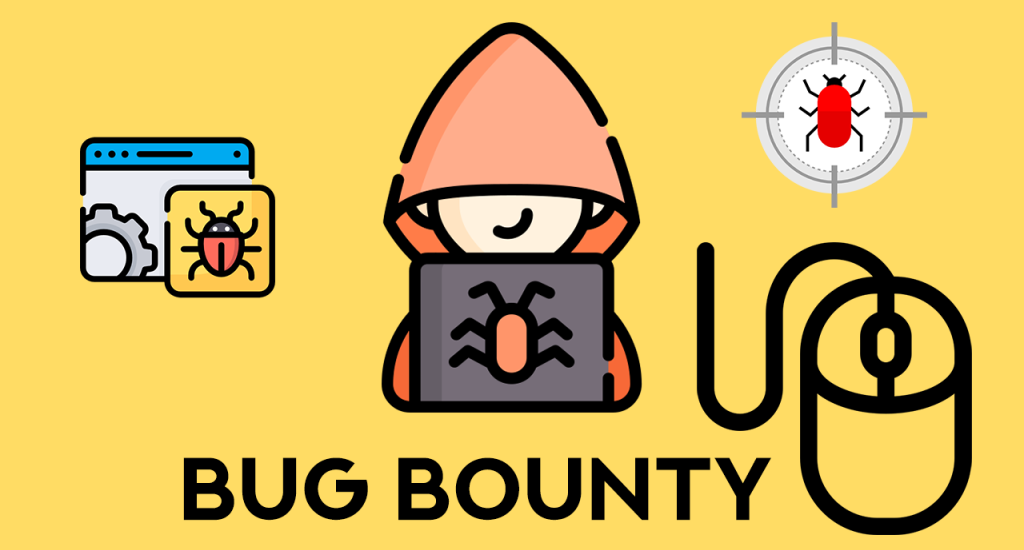Step-by-Step Guide to Your First Bug Bounty Program
Bug bounty hunting is an exciting way for students and aspiring ethical hackers to learn cybersecurity skills, gain hands-on experience, and potentially earn money. Here’s a detailed guide tailored for beginners, with relatable examples to help you get started.
Step 1: Understand Bug Bounties
A bug bounty program rewards ethical hackers for identifying and reporting vulnerabilities in a company’s software, systems, or applications. For example, companies like Google, Facebook, and Microsoft run such programs to enhance their security. As a student, think of it as solving a real-world puzzle where your findings can make systems safer.
Step 2: Build the Right Skills
Before diving into bug hunting, equip yourself with the necessary skills:
- Learn Programming: Start with languages like Python or JavaScript to understand how web applications work.
- Understand Web Technologies: Learn HTML, CSS, and JavaScript basics.
- Study Common Vulnerabilities: Familiarize yourself with OWASP Top 10 vulnerabilities (e.g., SQL Injection, Cross-Site Scripting).
- Master Tools: Tools like Burp Suite, Nmap, and Wireshark are essential for testing vulnerabilities.
Example: Imagine you’re testing a university’s online portal. By understanding SQL Injection, you might discover that entering ' OR '1'='1 in a login field bypasses authentication.
Step 3: Choose the Right Platform
Start with beginner-friendly platforms that offer structured learning:
- HackerOne: Offers free training through Hacker101.
- Bugcrowd: Provides public programs accessible to beginners.
- Intigriti: Known for its beginner-friendly environment.
- TryHackMe or HackTheBox: Practice labs to simulate real-world scenarios.
Example: Sign up on HackerOne and explore programs with low complexity. Look for targets like small websites or APIs that match your skill level.
Step 4: Select a Program
Choose a program based on your expertise:
- Read the program’s scope (what you can test) and out-of-scope rules.
- Focus on simple targets like web applications or APIs.
- Avoid programs requiring advanced skills initially.
Example: If you’re skilled at web application testing, select programs focusing on Cross-Site Scripting (XSS) or IDOR (Insecure Direct Object References).
Step 5: Research Your Target
Conduct reconnaissance to gather information about the target:
- Use tools like Nmap for network scanning.
- Analyze the website’s structure using Burp Suite or browser developer tools.
- Identify endpoints (URLs) that interact with users.
Example: While testing an e-commerce site, you might find an endpoint like /cart?id=123. Testing this parameter could reveal vulnerabilities like IDOR.
Step 6: Test for Vulnerabilities
Start testing systematically:
- Look for input fields where you can inject malicious data.
- Check if sensitive data is exposed in API responses.
- Test authentication and authorization mechanisms.
Example: Suppose you discover that changing id=123 to id=124 in an API request allows access to another user’s data. This is an IDOR vulnerability.
Step 7: Document Your Findings
When you find a bug:
- Take screenshots or record your steps.
- Write a detailed report explaining:
- What the vulnerability is.
- How it impacts the system.
- Steps to reproduce it.
- Suggested fixes.
Example: If you find an XSS vulnerability in a comment section, explain how injecting <script>alert('XSS');</script> displays an alert box.
Step 8: Submit Your Report
Submit your findings through the platform’s reporting system. Be professional and concise in your communication.
Tip: Submit bugs promptly to avoid duplicates from other hunters.
Step 9: Learn from Feedback
After submission, companies might ask for clarification or reject invalid reports. Use this feedback to improve your skills and approach.
Step 10: Celebrate Your Success!
Once your report is validated, you’ll receive a reward based on the bug’s severity. Rewards can range from $50 for minor bugs to thousands of dollars for critical issues.
Example: A student discovered a critical SQL Injection vulnerability in an API and earned $5,000 as their first bounty!
Tips for Students
- Start small—focus on easy-to-find vulnerabilities like XSS or IDOR.
- Dedicate consistent time each week to learning and hunting.
- Join communities like Reddit’s r/bugbounty or Discord groups for support.
- Take courses on platforms like Udemy (e.g., “Bug Bounty for Beginners”).



